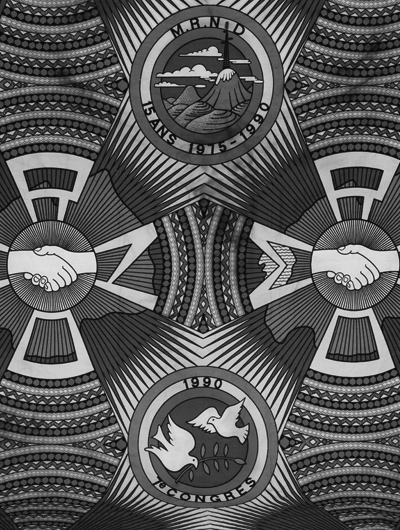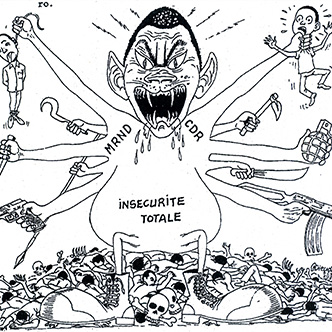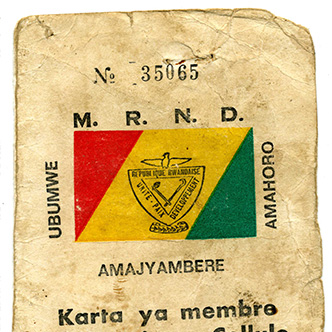
Understanding the event
The forces at play
At the beginning of the genocide, several factions that could bring together within themselves divergent movements clashed on the regional political scale.
Allowed since 1991, the multiparty system has led to a fragmentation of the democratic opposition which nevertheless remains a minority in the face of the main ruling party and racist extremist movements. The regime in place, led for twenty years by President Juvenal Habyarimana, is characterized by a political game online and the persistence of a double discourse to face antagonistic pressures from actors with divergent interests (particularly racist extremists and the international community). The assassination by Tutsi soldiers, on 21 October 1993, of the President of neighbouring Burundi – the first democratically elected Hutu head of state – marks the beginning of a further escalation in the radicalization of Rwandan extremists.
Under the leadership of Froduald Karamira, the various racist extremist factions and their militias gather under the banner of 'Hutu Power'. The previous partisan differences being left aside, the rallying of the «Hutu Power» supported by hate propaganda promotes indoctrination and the psychological preparation of the population for genocide.
Alongside these local protagonists, the position of the international community plays a determining role. Present on the ground since December 1993, the troops of the United Nations replace the French forces tainted by their unfailing support to the Habyarimana regime in 1990.
Tasked with overseeing the implementation of the Arusha Accords, this international force called the United Nations Assistance Mission for Rwanda (UNAMIR) deliberately withdraws from the conflict and abandons the Tutsi to their fate.



